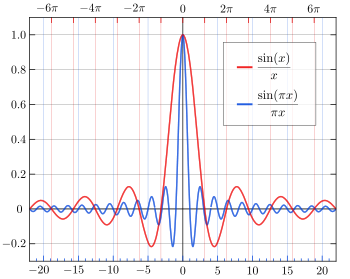Reciprocal is somehow anti-intuitive. y = x is a very simple function, a simple straight line but its reciprocal : y = 1/x is not simple at all as shown below.
(Note: y = 1/x. This can be changed to yx = 1. also think of a rectangular having area 1 (fixed) and one side y , the other side x. Think about the meaning of this.)

V
I = ------
R (in Ohm)
Ohm's Law shows a simple relation between I (current), V(voltage) and R(Resistance). When V is fixed, the relation between I and R becomes simply reciprocal. Say, to make V = 1 (volt), it becomes
1
I = ------
R
When R is very large, say 1M ohm ( 1,000,000 ohm) and 1G ohm (1,000,000, 000 ohm), the current differs very little from 1/1,000,0000 A (1uA) to 1/1,000,000,000 (1 nano A), much less than 1mA and much far less than 1A. Analogically if you a resistor your effort to increase from 1M ohm to 1G ohm (1,000 times higher) will very little rewarded as the current decreases only by 1 / 1000 or 0.999 uA.
On the other hand, when R is small (not very small), say from 1 ohm to 0.1 ohm (differs only 0.9 ohm), the current changes from 1A to 10A (fairy large current). If R is 0.1 Ohm and 0.01 Ohm, the difference is only 0.09 Ohm but the current increases from 10A to 100A (huge current), which will make a common consumer use battery die in a very short period. Again analogically if you a resistor and you decrease (yourself) from 1 ohm to 0.01 ohm (only by 0.99 ohm) you will get a big reward of 100A from 1A.
This relates with the following fundamentally very important relation is
Ref
y = sin (1/x)
The graph of this relation becomes

Copy from https://samjshah.com/2009/10/03/sin1x/
This article is easy to read.
The sine function has the max value 1 (one) and the minimum value is -1 (minus one) but the cycle becomes extremely frequent as x reaches 0 (zero), which the chart cannot show.
<to becomes extremely frequent>can be expressed as <to become more frequent exponentially>. Reciprocal and exponential may have some relations.
Looks similar but different - sinc function (wiki)


Another Ref
R, C, L Circuits
In Parallel Circuit of Resistors and Inductors (Coils) and the Series Circuit of Capacitors we can find reciprocals. Simple one is a Parallel Circuit of Resistors. The conclusion is
The Reciprocal of the total resistance = the sum of the Reciprocal of each Resistance.
Generally
IT = I1 + I2 + I3.
I = V/R
Therefore
VT/RT = V1/R1 + V2/R2 + V3/R3
Since VT = V1 = V2 = V3
Therefore 1/RT = 1/R1 + 1/R2 + 1/R3
Intuitively to bundle or twist the three wires together more current flows in them than the current flow in one single wire. But why <The Reciprocal of the total resistance = the sum of the Reciprocal of each Resistance> ? we need the above calculation. And remember <The total resistance is not the sum of the Reciprocal of each Resistance> but <The Reciprocal of the total resistance is the sum of the Reciprocal of each Resistance>, I would say double Reciprocal.
Not RT = 1/1 Ohm + 1/10 Ohm + 1/100 Ohm = 111/100 Ohm
But
1/RT = 1/1 Ohm + 1/10 Ohm + 1/100 Ohm = 111/100 Ohm
RT = 100/111 Ohm (Less than 100 Ohm)
I would say "Double Reciprocal " as we usually calculate like
1
RT = -----------------------------
1/R1 + 1/R2 + 1/R3
And I think many people do this though some strangeness remains.
Contrary to the Parallel arrangement Series Circuit is straight forward or very simple. The total Resistance = the sum of each Resistance.
R = R1 + R2 + R3 + ...
Generally
VT = V1 + V2 +V3.
IR = V
Therefore
ITRT = I1R1 + I2R2 + I3R3
Since IT = I1 = I2 = I3
Therefore RT = R1 + R2 + R3
Inductors act like resistors as XL (which is regarded as resistance) = 2πfL. On the other and Capacitors act as reciprocal of Resistors as XC (which is regarded as resistance) = 1/2πfC.
More interesting reciprocal nature will be found in the combination of RC, RL, LC and LCR Circuits, which I will review later.
sptt
